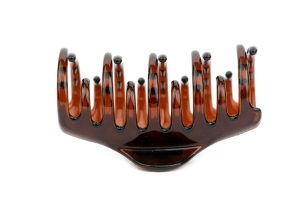Refurbished vs. New: When to Save and When to Splurge
When shopping for electronics or household appliances, it can be tempting to always go for the newest and shiniest products on the market. After all, who doesn’t love the feeling of owning cutting-edge technology? However, for many of us, the price tag of new items can be a major deterrent. This is where refurbished items come in – offering a more affordable alternative to buying new. But is it always worth it to save money and buy refurbished? In this article, we’ll explore the pros and cons of buying refurbished versus buying new, and help you make an informed decision on when to save and when to splurge.
What is Refurbished?
First things first, let’s define what refurbished actually means. Refurbished products are items that have been returned, repaired, and restored to a like-new condition before being put back on the market for sale. These items could have been returned due to a defect or malfunction, customer dissatisfaction, or simply opened and returned without being used. Depending on the seller, the refurbishment process may vary, but it usually involves thorough testing, cleaning, and replacing any necessary parts.
The Pros of Buying Refurbished
One of the biggest advantages of buying refurbished is the cost savings. Refurbished items are typically priced significantly lower than their brand-new counterparts, making it a more budget-friendly option for those looking to save money. Additionally, refurbished items often come with a warranty, giving you peace of mind that the product has been tested and is functioning properly.
Another advantage of buying refurbished is the positive impact on the environment. By opting for a refurbished item, you are essentially giving it a second chance at life, reducing the amount of waste that ends up in landfills. This is a more sustainable and eco-friendly option for those who are conscious about their carbon footprint.
The Cons of Buying Refurbished
The main drawback of buying refurbished is the uncertainty of its lifespan. While refurbished items have gone through a rigorous testing process, they are still not brand new and may have minor flaws or defects. This can potentially lead to a shorter lifespan compared to a new product. Additionally, refurbished items may not have the latest features or technology that a brand-new product would have, which may be a downside for those looking for the most advanced options.
When to Buy Refurbished
So when is it worth it to buy refurbished? It ultimately depends on your personal preferences and needs. If you’re on a budget and don’t mind potentially sacrificing the latest features, buying refurbished can be a smart choice. It’s also a great option for items that you don’t use frequently, such as a spare laptop or a backup phone.
What is New?
On the other hand, buying a new product means purchasing an item that has never been opened, used, or returned. These products usually come with a manufacturer’s warranty and the latest features and technology. However, they also come with a higher price tag.
The Pros of Buying New
The main benefit of buying new is that you are getting a brand-new, unused item. This gives you the reassurance that the product is in perfect condition and has a longer estimated lifespan. Depending on the type of product, buying new may also give you access to the latest and most advanced features.
The Cons of Buying New
The biggest disadvantage of buying new is the price. New items can be significantly more expensive than their refurbished counterparts, which may not be feasible for those on a tight budget. Additionally, as with any new technology, there’s always a risk that there may be bugs or issues with the product that have yet to be discovered and resolved.
When to Splurge and Buy New
If you have the budget to splurge and want the peace of mind of owning a brand-new, top-of-the-line product, then purchasing new may be the right choice for you. It’s also a better option for products that you use frequently or rely on for your work or daily activities. For instance, if you’re a professional photographer, it may be worth splurging on a new camera with the latest features, as opposed to buying a refurbished one.
Conclusion
When it comes to choosing between refurbished and new products, it’s important to weigh the pros and cons, as well as your personal preferences and needs. Refurbished items can offer significant cost savings and a lower environmental impact, while new items offer the latest technology and a longer estimated lifespan. Ultimately, the decision of when to save and when to splurge depends on your budget, priorities, and level of risk tolerance. Whichever you choose, make sure to do your research and buy from reputable sellers to ensure the best value for your money.











